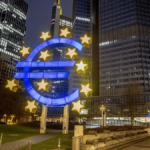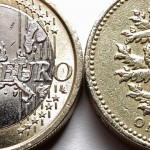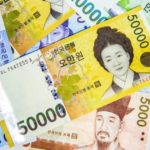The euro was trading lower against the US dollar during Fridays thin trade, while investors were focusing on the new homes sales report, scheduled for release out of the United States later in the day.
EUR/USD slipped to a session low at 1.3334 at 6:18 GMT, after which consolidation followed at 1.3344, retreating 0.09% for the day. Support was likely to be found at August 22nd low, 1.3298, while resistance was to be seen at August 21st high, 1.3427.
On Wednesday the released minutes of Federal Reserve’s most recent meeting showed that policymakers were “broadly comfortable” with Chairman Ben Bernanke’s time frame to begin asset purchase tapering this year, if the economy improves, with a few officials saying a reduction might be necessary soon.
Also, yesterday the Department of Labor in the United States reported that initial jobless claims rose by 13 000 to 336 000 during the week ending on August 17th 2013, as experts had anticipated a lesser increase in the number of claims, to 330 000.
Later in the day the United States will release a report on new home sales, a key indicator for US housing market. Median estimates pointed a decrease to annual 0.490 million homes in July from 0.497 million homes in June. Better than forecast results would certainly heighten the appeal of the greenback.
Meanwhile, the common currency received a boost after the release of series of PMI in the sectors of manufacturing and services in the Euro zone. Markit Economics reported that Euro zone’s Advance Manufacturing PMI improved to 51.3 in the month of August from 50.3 a month ago, marking the highest point in 26 months and outperforming expectations of a value of 50.7. Advance Services PMI in the common currency bloc rose to 51.0 in August from 49.8 in July, again above the expected reading of 50.2.
In addition, earlier today it became clear that German economy registered a steady growth rate during the second quarter of the year, following the weaker results in the first quarter, as growth was supported by higher investment costs and stable domestic consumption. According to official data, German Gross Domestic Product expanded by 0.7% during Q2 compared to Q1, in line with projections, while on annual basis the rate of growth was 2.9%. These figures confirmed the preliminary results, published last week and implied that German economy demonstrated the fastest development among the industrialized countries worldwide. What is more, the strong German economic growth was the main driving force in dragging the Euro region out of the longest recession since World War II. However, some experts warned that the country may face difficulties maintaining this rate of growth during the upcoming quarters.
Elsewhere, the euro was losing ground against the British pound, as EUR/GBP cross erased 0.19% to trade at 0.8554 at 7:37 GMT. On the other hand, the euro climbed to a month high against the Japanese yen on speculation that Bank of Japan Governor Haruhiko Kuroda will reiterate the case for unprecedented monetary easing at the Federal Reserve’s annual conference in Jackson Hole. At 7:40 GMT EUR/JPY pair was gaining 0.07% to trade at 131.95, after reaching 132.34 earlier today, the highest point since July 25th.





